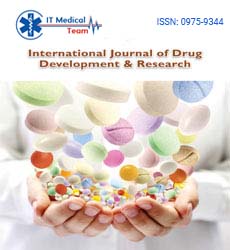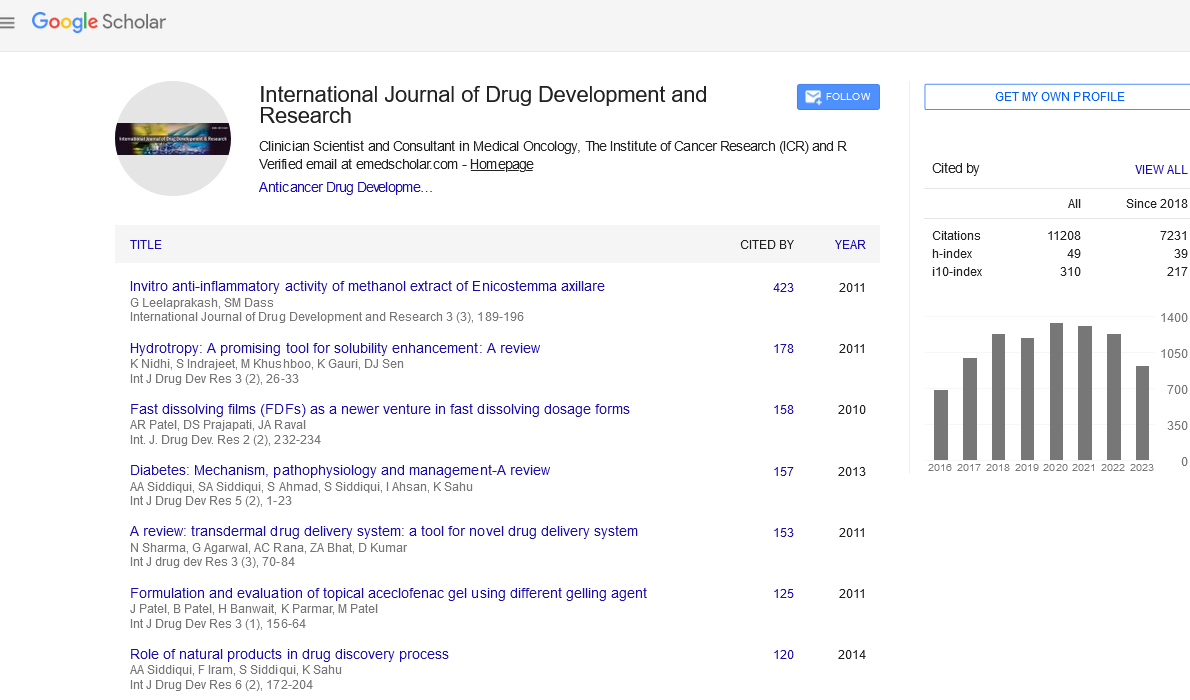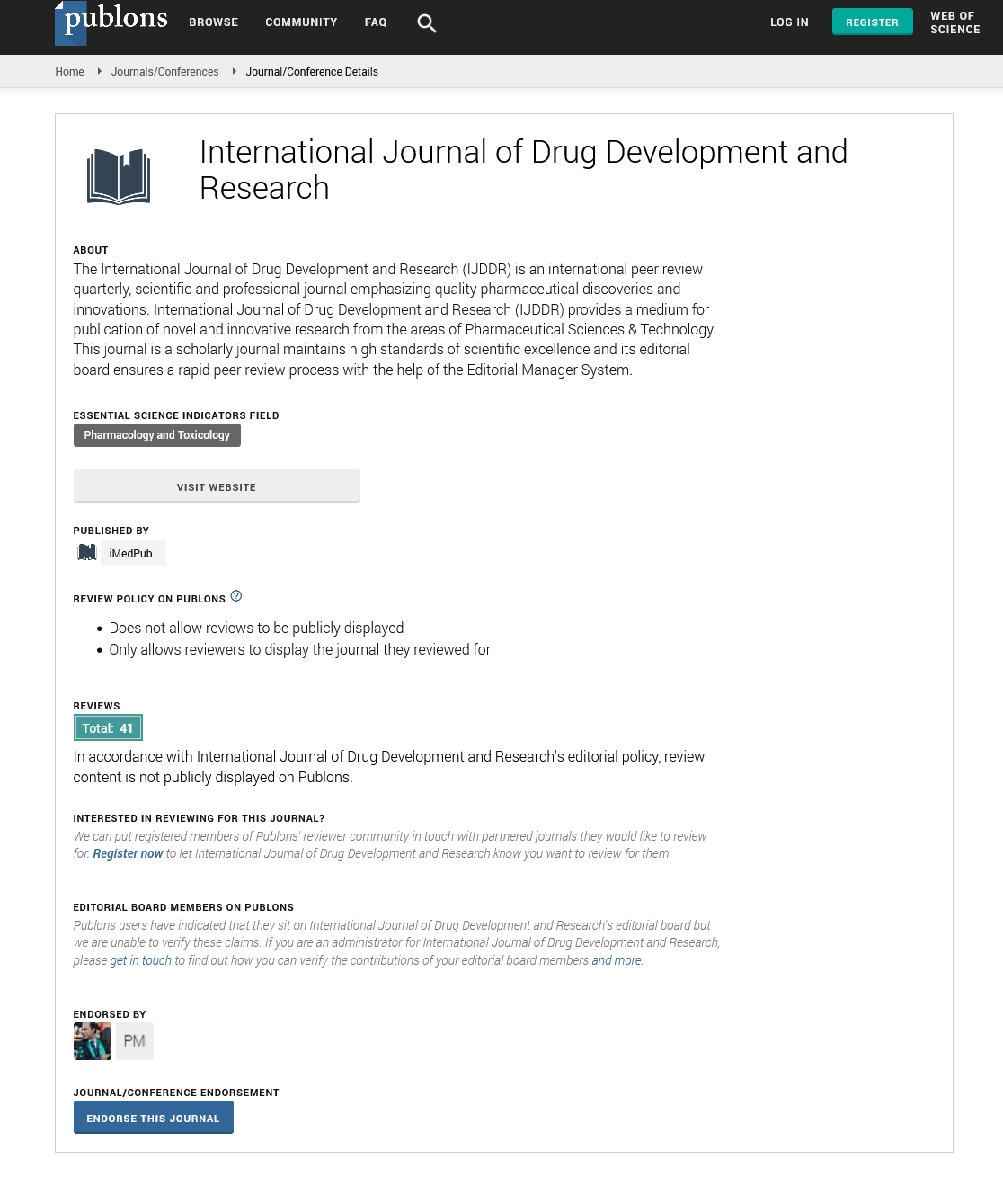Keywords
|
| Standardization, Extractive value, Carr’s index, Herbo-mineral. |
Introduction
|
| In the present era, market of all commodities has become global. Health has been of utmost importance since ancient times for the mankind. Market of health-related products has been active and these products are manufactured at different parts of the world and sold all over. Standardization is necessary to make sure the availability of a uniform product in all parts of the world [1]. Standardization assures a consistently stronger product with guaranteed constituents. WHO collaborates and assists health ministries in establishing mechanisms for the introduction of traditional plant medicines into primary healthcare programs, in assessing safety and efficacy, in ensuring adequate supplies, and in the quality control of raw and processed materials [2]. The present paper reports the preparation and standardization of herbomineral formulation based on organoleptic characters, physical characteristics, and physicochemical properties. |
Materials and Methods
|
| Plant materials were collected from local market of Mathura, U.P. The authenticity of the species of all the herbs was checked and confirmed from Botany department, BSA, College, Mathura, U.P., India. |
Preparation of Herbomineral formulation:
|
| The formulation was prepared as per the procedure of Ayurvedic Sarsangrah [3]. All the ingredients were powdered separately, passed through 80# sieve, and then mixed together in specified proportions to get uniformly blended herbomineral formulation. |
|
Marketed Sample
|
| Marketed sample of formulation and the LPH formulation were standardized based on their organoleptic characters, physical characteristics, and physicochemical properties. |
|
Macroscopy of Herbomineral formulation:
|
| The colour, odour and taste of all herbal drugs and formulation were determined. |
|
Microscopy of Herbomineral formulation:
|
| About 2 g of herbs and lab prepared herbomineral (LPH) formulation was taken and thoroughly cleaned with chloral hydrate as a clearing agent and then microscopic study [4,5,6,7,8] was done by staining the powder mixture with phloroglucinol, iodine solution and sudan red etc. |
|
Physicochemical studies:
|
| Physicochemical studies like total ash, acid insoluble ash, water soluble and alcohol soluble extractive values were carried out as per the WHO guidelines [4, 5, 6, 7, 9] for individual herbs, LPH formulation and marketed formulation. |
|
Evaluation of micromeritics characteristics
|
| Various micromeritics characteristics like bulk density, tapped density, Carr’s index and hausner’s ratio were carried out as per the standard methods [10,11]. |
|
Preliminary Phytochemical screening:
|
| The active phytochemical constituents like carbohydrates, alkaloids, steroids, and saponins were identified in aqueous and alcoholic extract of herbs; LPH and marketed formulation [5,12,13,14,15]. |
|
Thin layer chromatography:
|
|
Identification of compound of Herbo-mineral formulation by TLC
|
| About 10μl of the sample was spotted on precoated Silica gel-G aluminium plates of uniform thickness of 0.5mm as a stationary phase. Thin layer chromatograms were developed by using a mixture of different solvents as a mobile phase. The development was stopped when the solvent front had advanced about 7.5 cm. After drying plates in air, for some time, Iodine chamber and Dragondroff’s reagent was used as a detecting agent for the detection of compound. Compound present in the LPH formulation were identified by comparison with the spot of the reference standard [4,5,6,7,8,12 ]. |
Result and Discussion
|
| LPH formulation was evaluated as per the WHO guidelines. Pharmacognostical parameters revealed that the LPH formulation was blackish brown in color with Fragrant, Aromatic, and taste was spicy, slightly saline (table 1). Microscopical studies showed the presence of sclereids, rosettes calcium oxalate, stone cells, starch grains, fixed oil glands (table 2a,2b). It also showed the presence of stone cells with brownish matter, calcium oxalate crystals, starch grain and aleurone grains (Fig. 1). Physico-chemical parameters of LPH formulation were tabulated in table 3. Total Ash value of plant material indicated the amount of minerals, and earthy materials present in the plant material. Analytical results showed the Total Ash value was 32.93% w/w. The amount of acidinsoluble siliceous matter present in the plant was 1.1% w/w. The water-soluble extractive value indicated the presence of sugar, acids, and inorganic compounds. The alcohol soluble extractive values indicated the presence of polar constituents. Micromeritics characteristics of LPH formulation were tabulated in table 4. The flow ability of the LPH formulation was found to be passable at carrr’ index was found to be 24.4898±0.81, which was further confirmed by high value of Hausner ratio. The results obtained from phytochemical screening reveals that phytoconstituents like carbohydrate, alkaloids, proteins, Steroids, and sapposins in LPH formulation (Table 5,6). TLC profile of herbs, LPH formulation and marketed formulation was developed. Thin layer chromatography (Table 7) showed different spots (Fig. 2) that indicate the presence of different herbs in LPH formulation. |
Conclusion
|
| The present study involved the preparation and standardization of polyherbo-mineral formulation. We had done pharmacognostic study of polyherbo-mineral formulation. We had studied various morphology, microscopy, total ash, acid insoluble ash, ater soluble and alcohol soluble extractive value, bulk density, tapped density, carr’s index, hausner ratio, phytochemical tests and TLC. In Thin layer chromatographic studies, Rf value of herbs are more close to Rf value LPH formulation, marketed formulation and standards. This suggested that a precoated TLC plate gives perfect and close results which can be repeated in next future. |
| These parameters are required for authentication of any herbal drug and its Herbo-mineral formulation and also helpful in standardization and development of the quality control protocol of Herbomineral formulation. |
Acknowledgement
|
| Authors are thankful to Prof. Ashok Kumar Agrawal, Head of department of Botany, BSA College, Mathura, U.P., India for help. |
Tables at a glance
|
 |
 |
 |
 |
| Table 1 |
Table 2a |
Table 2b |
Table 3 |
 |
 |
 |
 |
| Table 4 |
Table 5 |
Table 6 |
Table 7 |
|
| |
Figures at a glance
|
 |
 |
| Figure 1 |
Figure 2 |
|
| |








